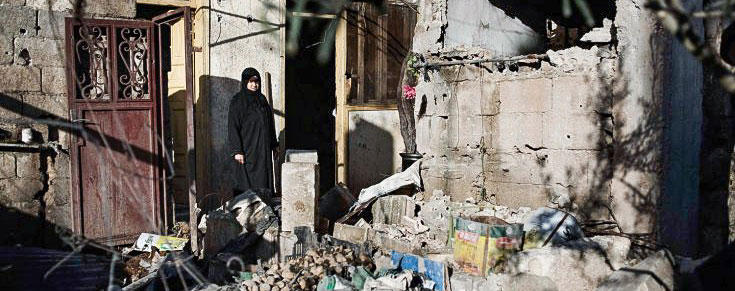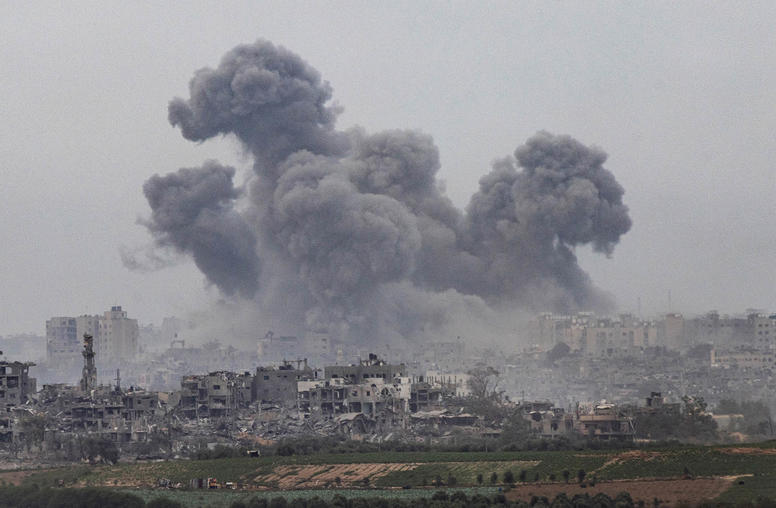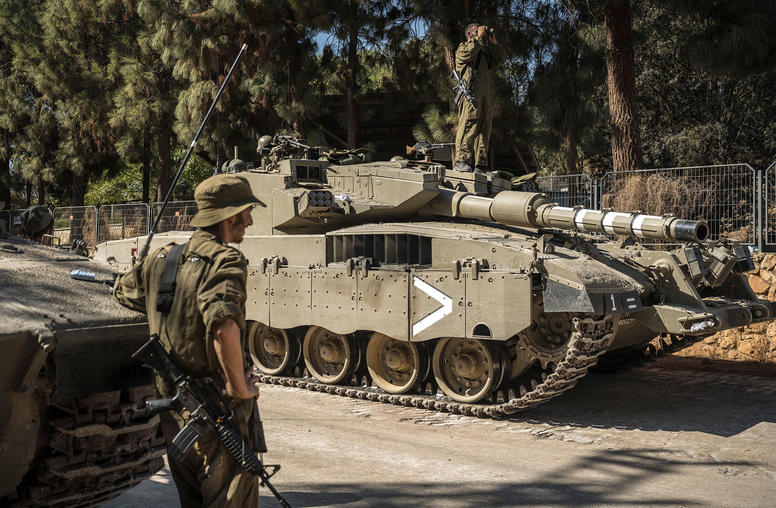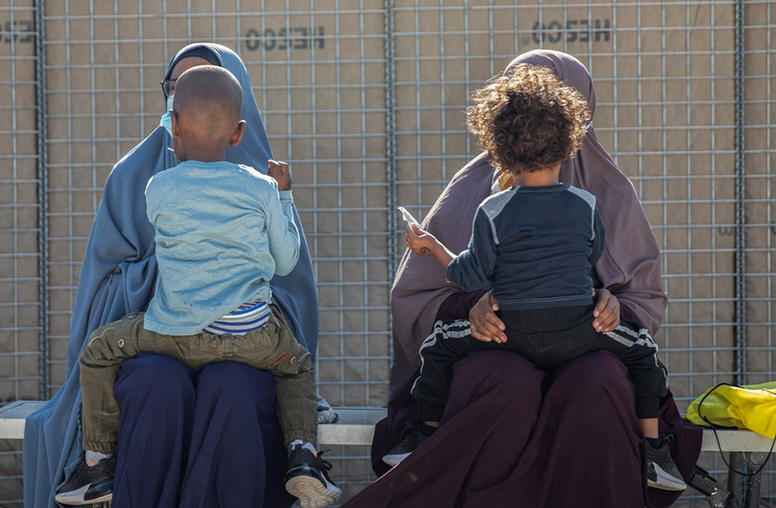The Women in the Middle of the War
Rampant sexual assault has unmade allegiances in Syria's civil war -- and it may well get worse no matter which side wins.

Stop by a women’s shelter in Syria today, and the inhabitants will tell you just how bleak the future looks. After more than four years of civil war, the pervasive sexual assault that has become a blight on the country, regardless of allegiance, shows no sign of abating. As violence increases, more women are growing convinced that the end of the war is more significant than who emerges as the winner. The protracted conflict is leaving women to bear the brunt of the war, and they are reaching their breaking point.
At the end of the day, a woman who runs such a shelter near Damascus told me, the politics of those who torment and rape these Syrian women doesn’t matter — for most victims, the line between opposition or the regime is blurred, if they can tell the political identity of the perpetrator at all.
Women have been targeted by both sides. Recent reports by Human Rights Watch, among other groups, have documented instances of severe beatings of women in areas where regime forces conduct house raids. As regime soldiers carry out door-to-door searches and arrests in cities like Daraa, and other areas controlled by government forces, they often detain and abuse the women of these homes to terrorize their neighborhoods into submission. In areas where rebels exercise greater control, well-coordinated extremist organizations like the Islamic State (also called ISIS and ISIL), have imposed a host of restrictions on the dress and behavior of the women in the region. Last year, the United Nations reported that many of these women, including the ones who’re displaced into such strongholds, are subjected to rape and other forms of abuse.
Meetings at the beginning of December in Istanbul and Hatay state in Turkey, along with meetings two weeks prior in Gaziantep, some 60 miles north of Aleppo in southeast Turkey, confirmed what lessons from other conflicts had shown me. Women often bear the brunt of war. This is no different in the Syrian civil war. Ironically, this has also forced many women in Syria to develop a very pragmatic and clear-eyed vision of where their country is headed.
Coming from a cross-section of ethnic and religious backgrounds — Druze, Sunni, Kurdish, Shiite — the women I met with had experienced abuse at the hands of pro-regime fighters as well as rebel groups, such as the Islamic State.
Having met and worked with over 40 women leaders on the ground in Syria over the past year, I have seen their political assessments become less and less hopeful. No matter who they are or where they come from, Syrian women are not protected from the carnage that surrounds them. They’re among the most vulnerable groups in any conflict, and the amount of rape in Syria has become a forgotten pandemic. I know of one woman who, along with two of her friends, were kidnapped, locked up in a room for days, and raped repeatedly. She has no idea what political faction her attackers belonged to. It simply doesn’t matter anymore.
In 2013, approximately 38,000 people appealed to the United Nations for help in Syria after facing gender-based assault. That’s just the tip of the iceberg in a conflict that has claimed way over 200,000 lives, according to the Syrian Observatory for Human Rights. The U.N. Population Fund estimates that there are now around 7.5 million women or girls who are displaced and very vulnerable to gender-based violence within Syria. Yet, such violence is still often presented as a peripheral aspect or consequence of the war in Syria, and not as an active instrument of wartime subjugation.
Those who rape and violate women in Syria do so by taking advantage of certain social taboos that make it difficult for women to talk about what happened to them. They fear being ostracized by their communities, or even by their families. In areas controlled by religious extremists, women who are violated also fear for their lives, as being sentenced to death is a possible consequence for being forced to participate in certain sexual acts. These possibilities are a form of social control that can be leveraged during chaotic situations like the one in Syria right now. Sexual assault is not an accidental consequence of war, but a strategy for control.
There’s no sign that the situation in Syria will change anytime soon. The United States has shown little appetite for any kind of long-term intervention in Syria, which would include the shepherding of a peaceful post-Assad political transition, and neither has the international community. This is one of the darkest and most disturbing realities that I’ve come to recognize in my Syria-related work: The suffering of women in their country will likely continue for a long time to come.
Despite the hellish realities that characterize their circumstances, Syrian women have taken up the essential task of organizing their communities during a time of civil war. They have been among the first to step out onto the front lines, risking their lives and leading their communities. Despite the threat of being kidnapped or arrested, killed or raped by detractors, they work tirelessly to help others. The Damascus women’s shelter is a great example of this kind of bravery, and the woman who has courageously led the initiative now has great reach in her region. Because of the price this courage entails, I’ve noticed that the women of Syria assess future possibilities with great nuance and pragmatism.
Syrian women have taken the lead as part of the humanitarian response to the growing humanitarian crisis. Since men are more likely to be harassed and detained at borders and checkpoints, women are now the primary citizens traveling in and out of the country to maintain household and property needs inside Syria. At the same time, women are often the leading organizers for civilian mobilization, including being active on the local councils, which are can be found across the country in both regime and opposition controlled areas.
Early last year, the Syrian women I spoke with were adamant that the only solution to the conflict is the total annihilation of Assad’s regime at any cost. This is no longer the case, as the women have become more divided in their political conclusions. This fundamental shift in opinion reflects the changing dynamics in the region, which have forced women in Syria to consider a number of different possible outcomes. The recent rise of the Islamic State is the most important aspect of such dynamics. All the Syrian women I spoke to said that an Islamic State-controlled Syria would be their worst nightmare. They fear that the Islamic State would step into the political vacuum if Assad is overthrown violently, and no other organization has enough support or internal cohesion to step up to the plate and govern the nation.
Nonetheless, the status quo is also a horrible situation, as the rape of Syrian women seems to have transcended political factions. And the ongoing stalemate between Assad and opposition forces continues to fuel this crisis.
It is hard to believe that things can actually get much worse. But they can.
If Assad, who bears a majority of responsibility for Syria’s mess, is toppled by a violent military process, then the political vacuum he leaves will elicit a violent struggle to take his place. Opposition factions, already divided, will fight each other to claim power in an Assad-less Syria. The most organized groups in the diverse array of Syrian opposition clusters are Muslim extremists who fight for a future Syria governed by their grotesque version of Sharia law. And among these fanatics, the Islamic State is probably the most organized and successful, having already taken large swaths of Syria and Iraq. If they replace Assad as the future rulers of Syria, the women of the region are in for an absolute disaster. Many Syrian women recognize this reality, and have qualified their willingness to see Assad fall.
On the flip side, if Assad wins some sort of settlement to stay in power and is able to overcome the violent assault on his rule, the women of Syria are also in deep trouble. Dictators control their territory with totalitarian tendencies and the women who have sacrificed so much to organize their communities during a time of conflict will become Assad’s targets. We can imagine what such a crackdown would look like by observing the way Assad’s forces treat female civilians. It’s estimated that over 1,000 women have already been jailed by the regime as political prisoners, where they’re subjected to systematic sexual abuse (sometimes along with the male prisoners). These poorly kept, cockroach-infested “rape prisons” hold hundreds of Syrian women, who’re often held in solitary confinement until they’re “needed.” These establishments are a part of Assad’s enforcement network, and would continue to operate if he stays in power.
One by one these women that have been taking the lead in helping to coordinate communities in the midst of political collapse, who have no protection, will be crushed under the weight of Assad’s vengeance. One of the regime’s primary strategies to delegitimize the oppositions trying to oust Assad has been to demonstrate the opposition held areas are falling into chaos. Any attempt to organize or improve the situation is viewed by Assad’s regime as active treason.
This is why most Syrian women I have come into contact with want to see the end of Assad. It’s just a matter of how he goes.
The only glimmer of hope is for Assad to be removed by a political process that involves all those who have a stake in Syria’s future. This means a process guided by a force strong enough to see through a peaceful transition to a civilian government that is pluralistic, that respects human rights (especially the rights of women), and sticks to the rule of law. The question is who in the world will be able to step into this role, as the U.S. has not shown any signs of committing itself, and the U.N. efforts in Geneva have come to naught.
The chaos and violence in Syria is truly astonishing and will be remembered as one of this century’s greatest crimes. But it has been equally astonishing for me to witness the ability of Syria’s women to survive unimaginable hardships in order to see reality as it really is. Along with the rest of Syria, they desperately need an end to the violence that guarantees a peaceful future.
This is true now more than ever, and the stability of the entire region hinges on it.
Reposted with permission from ForeignPolicy.com, Source: “The Women in the Middle of the War"



